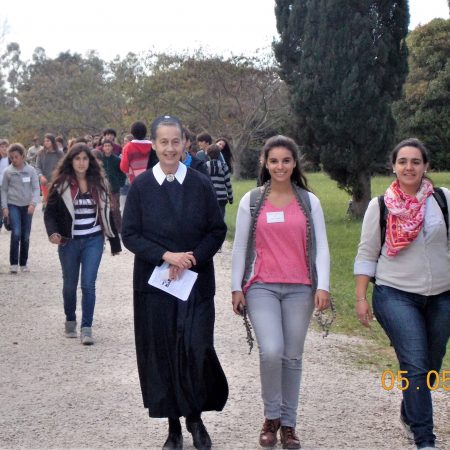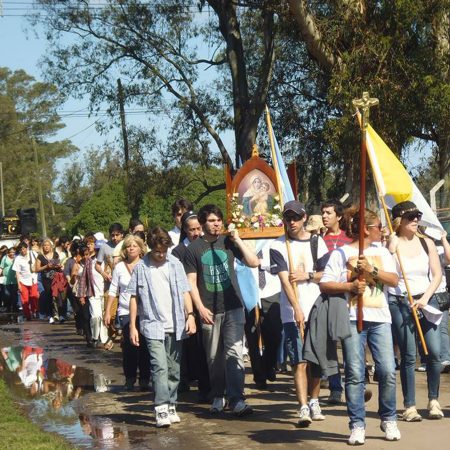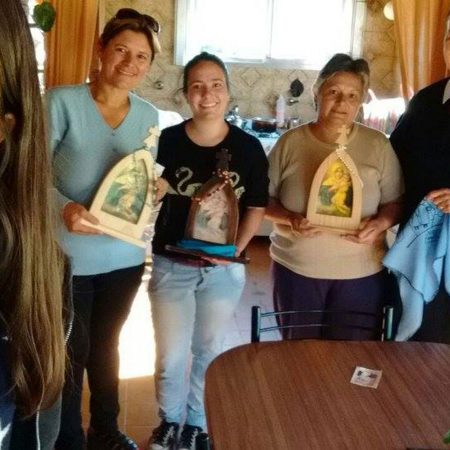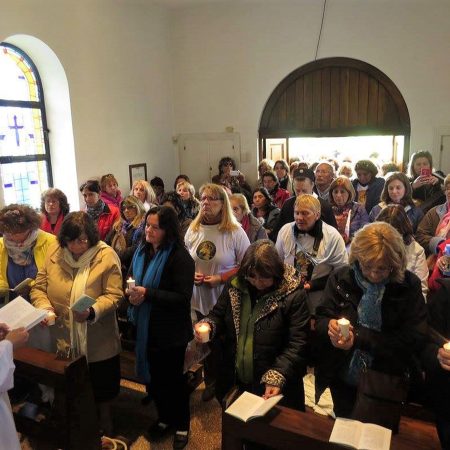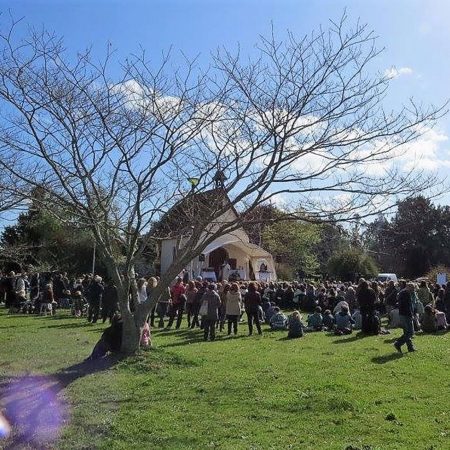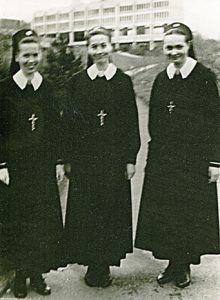
Again, it was a Covenant Day,
March 18, 2017, when Sister Marie-Madeleine Hesselmann returned to Germany for a mission in the “shadow of the Original Shrine”.
45 years ago she was sent to Argentina with her course sisters, Sr. M. Harriett Roderigo and Sr. Marianne Driller (+ 2015). It was a Covenant Day, November 18, 1973, when they left Schoenstatt, and from Genoa by ship, the “Cristoforo Colombo,” to travel to Buenos Aires, Argentina. On December 6, they went ashore there. During these four and a half decades, the sisters only came to Germany for a short home leave. We asked her about her experiences in Argentina and now in Germany again.
Editor: Schw. Marie-Madeleine, you traveled as an enthusiastic missionary sister to Argentina to live there completely for the mission Schoenstatt. How did you feel about it – and how is it today?
Sister Marie-Madeleine: You call me an “enthusiastic missionary sister” and I think I still am. Actually, the glow for the missions has increased over the years.
Between 1973 and my return to Schoenstatt in 2017 there are moving and richly blessed years in that faraway land that I learned to love and whose people have grown dear to my heart. It was, of course, a slow process that contained joys and sorrows. All of this has made Argentina my home.
Editor: What helped you as young sisters in a foreign country?
Sister Marie-Madeleine: Especially at the beginning the daughter shrines played an important role, because they are faithful reproductions of the original shrine. When we were received by the sisters on arrival and then thanked together in the Shrine of the Provincial House in Florencia Varela for the good crossing, we immediately felt the grace of being at home.
Editor: What did you experience as a challenge?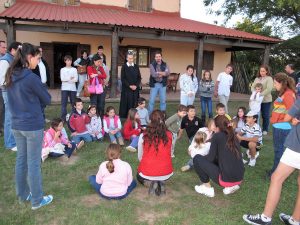
Sister Marie-Madeleine: One of the first challenges is always to learn the language of the new country. This is the only way to communicate well with people, to absorb their culture, their way of life and originality, to appreciate and love them. Today we talk a lot about inculturation, a process of integrating different cultures. It is a mutual enrichment that one can experience in contact with another people. Then the openness to the other person’s original nature becomes a valuable gift for me. To be fruitful as a Schoenstatt missionary, this is certainly an important prerequisite. It is always a giving, but above all a receiving.
Editor: In which areas did you work? What attracted you, what was important to you?
Sister Marie-Madeleine: My multifaceted tasks have brought me to meet people from many regions and different areas of life and conditions in this vast and great country. I worked in the schools, in the Schoenstatt Movement with young people, mothers and families, in the shrine ministry and in the Pilgrim Shrine project. I have always considered the broad social range that I experienced firsthand as a special challenge and opportunity for our Schoenstatt program and my personal work. For years I was able to accompany and inspire many social initiatives of our laity through my apostolic work in the Schoenstatt Movement. That gave me a rich life-experience.
Editor: In closing, do you want to let us participate in special highlights or joys?
Sister Marie-Madeleine: Yes, with pleasure: in the more than four decades I was happy to accompany the growth of the Schoenstatt Family. After consolidating, it was able, through the power of the covenant of love and the charism of our father and founder, Father Kentenich, to develop important projects in pedagogical, social, political and other social spheres that would make a valuable contribution to the renewal of society.
It was also a great pleasure for me to support the so-called “Misiones” – student and family mission – and to actively participate in it. The Misiones have a great attraction and tremendous religious formative power, both for the “missionaries” and for the “missions”.
